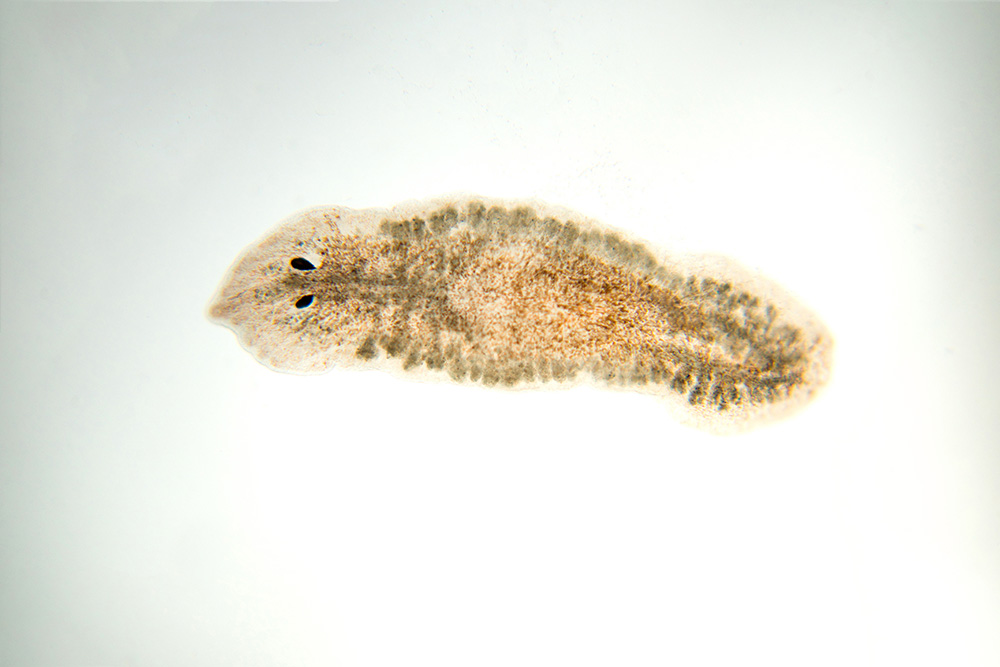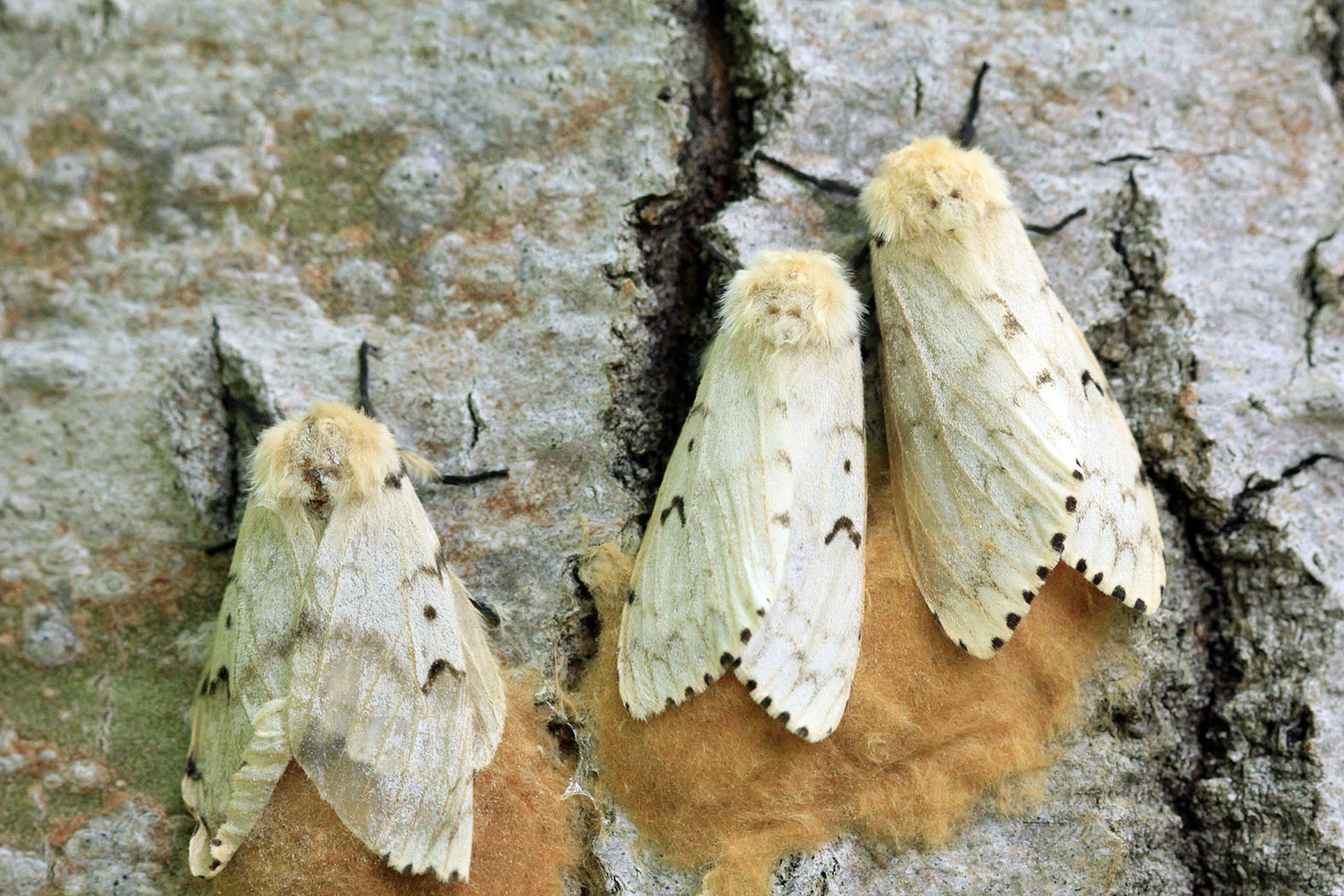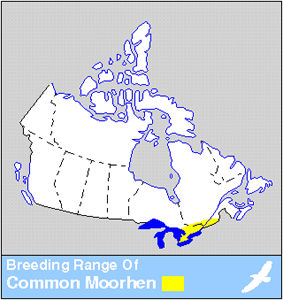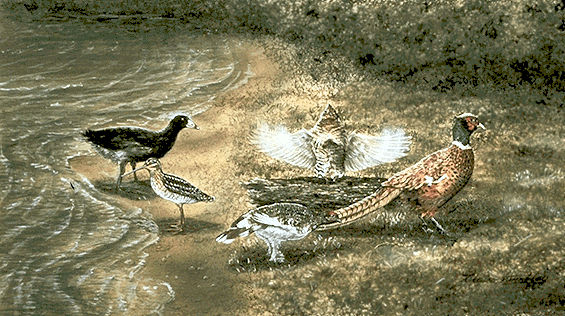Browse "Animals"
-
Article
Finch
Finch is a common name for one of the larger bird families, Fringillidae, which occurs worldwide (introduced in Australia). It includes some GROSBEAKS, crossbills, Hawaiian honey creepers, redpolls, siskins and birds specifically named finches.
"https://d2ttikhf7xbzbs.cloudfront.net/media/media/eca83442-77d5-44c5-87d2-63625c1052a5.jpg" // resources/views/front/categories/view.blade.php
https://d2ttikhf7xbzbs.cloudfront.net/media/media/eca83442-77d5-44c5-87d2-63625c1052a5.jpg
-
Article
Firefly
Fireflies, also known as lightning bugs, are beetles belonging to the family Lampyridae and are best known for their ability to produce light. There are over 2,200 species of fireflies worldwide, including 32 species found in Canada, with more being discovered every year. Of these species, some of the most commonly encountered in Canada are the winter firefly (Ellychnia corrusca), the black firefly (Lucidota atra) and the common firefly (Photinus pyralis).
"https://d2ttikhf7xbzbs.cloudfront.net/firefly/Adult-Firefly.jpg" // resources/views/front/categories/view.blade.php
https://d2ttikhf7xbzbs.cloudfront.net/firefly/Adult-Firefly.jpg
-
Article
Fish Classification
The classification of fishes has undergone much change over the last few decades, and further changes are expected, partly because so many groups are poorly known.
"https://development.thecanadianencyclopedia.ca/images/tce_placeholder.jpg?v=e9dca980c9bdb3aa11e832e7ea94f5d9" // resources/views/front/categories/view.blade.php
https://development.thecanadianencyclopedia.ca/images/tce_placeholder.jpg?v=e9dca980c9bdb3aa11e832e7ea94f5d9
-
Article
Fisher
The Fisher (Martes pennanti) is a member of the weasel family, with a typically pointed face and rounded ears. In Canada, fishers live in the boreal and temperate forests of almost all the provinces and territories, with the exception of Newfoundland and Labrador and Prince Edward Island.
"https://d2ttikhf7xbzbs.cloudfront.net/media/media/9eae4cbd-f1c4-42b5-a0e7-2b7d87160e29.jpg" // resources/views/front/categories/view.blade.php
https://d2ttikhf7xbzbs.cloudfront.net/media/media/9eae4cbd-f1c4-42b5-a0e7-2b7d87160e29.jpg
-
Article
Fish
Fishes are members of a large, heterogeneous group of vertebrates living in a wide variety of aquatic habitats.
"https://d2ttikhf7xbzbs.cloudfront.net/media/media/ca0c853c-49ef-4eb4-a4d2-c5693fbd8f73.jpg" // resources/views/front/categories/view.blade.php
https://d2ttikhf7xbzbs.cloudfront.net/media/media/ca0c853c-49ef-4eb4-a4d2-c5693fbd8f73.jpg
-
List
Five Prehistoric Canadian Animals
Many animals found in Canada have become part of the country’s iconography. The beaver, the caribou, the loon and the polar bear, for example, all grace our currency, while moose, narwhals and others are pictured in regional emblems. If asked to name the creatures that roamed Canada long before these familiar ones, many might cite Tyrannosaurus rex or Triceratops, two of the 88 species of dinosaur found here (see Dinosaurs Found in Canada). But between dinosaurs and today’s beavers — a period of about 225 million years — whole ecosystems flourished and disappeared in Canada, and networks of animals with them. Below are five prehistoric Canadian animals. Two of them, Albertonectes and Cryodrakon, were contemporaries of the dinosaurs. Three others, the giant beaver, mammoth, and American mastodon, existed millennia later.
"https://d2ttikhf7xbzbs.cloudfront.net/Albertonectes/AlbertonectesFullBody.jpg" // resources/views/front/categories/view.blade.php
https://d2ttikhf7xbzbs.cloudfront.net/Albertonectes/AlbertonectesFullBody.jpg
-
Article
Flatfish
Flatfish is the common name for fish belonging to the order Pleuronectiformes. There are 14 families of flatfish and over 800 species worldwide. In Canadian waters there are approximately 39 species of flatfish, from five families. These families are Pleuronectidae, Bothidae, Paralichthyidae, Scophthalmidae and Cynoglossidae. Familiar flatfishes found in Canada include halibut, plaice, flounder and turbot. Among their distinguishing features, flatfish have both eyes on one side of their body.
"https://d2ttikhf7xbzbs.cloudfront.net/media/new_article_images/FlatFish/winter_flounder4_NOAA.jpg" // resources/views/front/categories/view.blade.php
https://d2ttikhf7xbzbs.cloudfront.net/media/new_article_images/FlatFish/winter_flounder4_NOAA.jpg
-
Article
Flatworm
Flatworm (Platyhelminthes), phylum of soft, bilaterally symmetrical invertebrates. Flatworms vary in shape from leaflike to ribbonlike; size ranges from microscopic to over 15 m long (some parasitic forms).
"https://d2ttikhf7xbzbs.cloudfront.net/media/media/1c916851-7140-481e-a5e6-812a3be18786.jpg" // resources/views/front/categories/view.blade.php
https://d2ttikhf7xbzbs.cloudfront.net/media/media/1c916851-7140-481e-a5e6-812a3be18786.jpg
-
Article
Flea
Fleas are very small, wingless, laterally flattened insects of the order Siphonaptera. They’re best known for being external parasites on mammals and occasionally birds. Adult fleas live in the fur or feathers of their hosts, feeding on their blood to survive and reproduce. While fleas do feed off humans, more common host animals include rodents, dogs and cats. The “human” flea, Pulex irritans, actually attacks a broad range of mammal species, and the same is true of most flea species that bite humans. About 2,000 species and subspecies are known worldwide, with at least 127 found in Canada, most of them in British Columbia and Alberta.
"https://d2ttikhf7xbzbs.cloudfront.net/media/media/0eca7c30-71f0-499e-ae2c-f9b6d8219faf.jpg" // resources/views/front/categories/view.blade.php
https://d2ttikhf7xbzbs.cloudfront.net/media/media/0eca7c30-71f0-499e-ae2c-f9b6d8219faf.jpg
-
Article
Fly
Adult flies have sucking or piercing mouth parts and lack the mandibles with which other insects bite food. Many so called "biting flies" (eg, horseflies, mosquitoes, no-see-ums, black flies, stable flies, tse-tse flies) feed on VERTEBRATE blood.
"https://d2ttikhf7xbzbs.cloudfront.net/media/media/1411b444-a35b-4113-8841-686fbe20b642.jpg" // resources/views/front/categories/view.blade.php
https://d2ttikhf7xbzbs.cloudfront.net/media/media/1411b444-a35b-4113-8841-686fbe20b642.jpg
-
Article
Four Major Insect Pests of Forests in Canada
Many insects are considered pests to Canada’s forests, meaning they cause significant ecological or economic damage to forest ecosystems. These species can injure trees in various ways, including boring through wood, eating leaves, and introducing pathogens to trees. These stressors can cause economic damage by reducing the amount of wood fibre that can be harvested and can sometimes negatively impact the ecosystem. While some of these pests have been recently introduced to Canadian forests from other parts of the globe, the majority of insect forest pests in Canada are native species. Under ordinary conditions, these species are natural sources of disturbance and diversity that can help to maintain healthy forests over long periods. However, human-mediated factors such as climate change, the introduction of non-native species, and biodiversity loss have more recently worsened the impacts that certain species can have on Canadian forests. Below is a list of just a few of the many such insects impacting Canadian forests, along with the estimated area of forest, in hectares, that a population outbreak defoliated or killed as well as the year that outbreak occurred.
"https://d2ttikhf7xbzbs.cloudfront.net/insectpestsofforests/spongy-moth.jpg" // resources/views/front/categories/view.blade.php
https://d2ttikhf7xbzbs.cloudfront.net/insectpestsofforests/spongy-moth.jpg
-
Article
Fowler's Toad
The Fowler’s toad (Anaxyrus fowleri) is a medium-sized, earthen-coloured toad that is native to Eastern North America. In Canada, Fowler’s toads are only found in a few small areas along the north shore of Lake Erie. This species lives in places with sandy or gravelly soils into which individuals can burrow; Fowler’s toads spend much of their time underground. Due to small and declining populations, the Fowler’s toad is endangered in Canada.
"https://d2ttikhf7xbzbs.cloudfront.net/FowlersToad/CrowleyFowlersToad.jpg" // resources/views/front/categories/view.blade.php
https://d2ttikhf7xbzbs.cloudfront.net/FowlersToad/CrowleyFowlersToad.jpg
-
Article
Frog Species in Canada
Frogs are amphibians belonging to the order Anura. Worldwide, frogs are the most numerous group of amphibians, with more than 5,000 living species. They are found on all continents except Antarctica. There are 24 species of frog currently found in Canada. In addition, one species, the Blanchard’s cricket frog, is extirpated. This means that, while it continues to live in other parts of its range, it is no longer found in Canada. Five of Canada’s frog species are toads, which are frogs belonging to the family Bufonidae. While most frog species in Canada are found in the southern reaches of the country, a few, for example the boreal chorus frog, have ranges extending into Yukon and the Northwest Territories, and in the case of the wood frog, Nunavut.
"https://d2ttikhf7xbzbs.cloudfront.net/FrogSpeciesInCanada/AmericanBullfrog.jpg" // resources/views/front/categories/view.blade.php
https://d2ttikhf7xbzbs.cloudfront.net/FrogSpeciesInCanada/AmericanBullfrog.jpg
-
Article
Gallinule
Gallinule is a common name for some marsh-dwelling birds of the rail family (Rallidae), now also known as moorhens.
"https://d2ttikhf7xbzbs.cloudfront.net/media/media/7a9dff00-31fa-400c-910d-dbc148c48f73.jpg" // resources/views/front/categories/view.blade.php
https://d2ttikhf7xbzbs.cloudfront.net/media/media/7a9dff00-31fa-400c-910d-dbc148c48f73.jpg
-
Article
Game Bird
Game bird is not a scientific term, but refers to any bird that is hunted. There are 2 categories in Canada, migratory and nonmigratory.
"https://d2ttikhf7xbzbs.cloudfront.net/media/media/82572582-06cb-4165-a0ba-fbb3f8e521d1.jpg" // resources/views/front/categories/view.blade.php
https://d2ttikhf7xbzbs.cloudfront.net/media/media/82572582-06cb-4165-a0ba-fbb3f8e521d1.jpg
